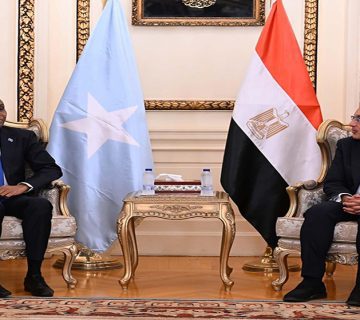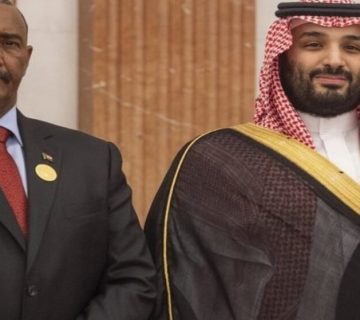Few political pronouncements generate blips on monitors of Kenyans who are seemingly comatose from endless, empty political rhetoric. One of these is President Uhuru Kenyatta’s ‘revisiting’ of Kenya’s relations with Somalia following a confrontation between Somalia National Army and Jubbaland forces in the border town of Mandera earlier this month. Kenyatta said, through his spokesperson, Kanze Dena-Moraro, “the foreign soldiers, in flagrant breach and total disregard of international laws and conventions, engaged in aggressive and belligerent activities by harassing and destroying properties of Kenan citizens living in the border town of Mandera.” Kenya considered the incursion as unwarranted. Somalia explained it as a pursuit for Abdirashid Abdinur, a fugitive Jubbaland minister who Somalia accused Kenya of harboring. This breach adds to a list of unresolved security-related issues that periodically test Kenya’s on and off brotherly relations with Somalia, issues that these neighbors must iron out completely for regional peace.
Unresolved, Tension-Inducing Issues
Kenya has tried but is yet to succeed in remaining apolitical in matters that pit Somalia’s federal government against the country’s regional states, or feigning disinterest in the security of Somalia. Explanations for these realities range from Kenya’s national interests, and governance in Somalia, to the country’s instability. Take the Jubbaland question as an example of such a matter. Besides Somalia, Kenya has suffered disproportionately as a result of al Shabab terrorism compared to other countries in the region. Consequently, Kenya has invested comparatively more resources to minimize the impact of the group’s activities in Kenya. This investment has largely taken the forms of contributing troops to the African Union-mandated peace-keeping force in Somalia, AMISOM, and ensuring a buffer zone is maintained between the group’s base and Kenya. Kenya’s interest in the happenings in Somalia’s Jubbaland, which buffers Kenya in this regard, should therefore not surprise anyone, because Kenya is convinced that her exposure to more terrorism will increase if this state falls into the hands of al Shabab.
To complicate things, Kenya supports the Kenyan-affiliated Jubbaland President, Ahmed Madobe, whose 2019 re-election was disputed; Somalia’s President, Mohamed Abdulahi Mohamed (‘Farmajo’), does not recognize Madobe. For Farmajo, Kenya’s interest in Jubbaland’s security and stability amounts to interference. Just before the Mandera incident, 11 members of the Kenyan Parliament, with ties to the Somali nation and representing the constituencies of Mandera and Wajir, visited Villa Somalia to ‘discuss peace’ and insecurity in their counties with Farmajo. Some of this insecurity has been attributed to al Shabab. This peace and security mission, which could also be read as interference, foregrounds suspicion, perceptions of irredentism, ethnocracy, divided loyalties, and Kenya’s insecurity. Ethnic-based political alignments and efforts to support these will become more apparent as the ‘one man, one vote’ election nears.
The Somali refugee question is the third matter. Years of war and insecurity have displaced thousands of Somalis, making Somalia one of the world’s top five, and Africa’s top two refugee-producing country, according the United Nations refugee agency’s (UNHCR’s) 2020 data. Kenya, this data indicates, hosts 53.9 per cent of the expulsed Somalis – 44 per cent of them at Dadaab (refugee settlement in Garissa County), 40 per cent at Kakuma (a refugee settlement in Turkana County), and 16 per cent Kenya’s urban areas. Dadaab has been linked severally to terrorism. This is not unusual as the association between forced migration, ethnicity, and insecurity in the host country have been established by scholars such as Kerstin Fisk (2019), and Idean Salehyan (2019). The extent to which Somali refugees aid al Shabab has not been definitively established, but almost all the terrorist attacks that have occurred in Kenya in 2020 have been associated, in some way, with Somalia, Somali nationals, and activities of al Shabab in Mandera, Lamu, Wajir, and Garissa Counties. Kenyan authorities have threatened the expulsion of the refugees and closure of Dadaab severally. Ongoing debates between those who see the refugees as a threat to their well-being; and refugee rights activists, and the Somalis in the camp, and diaspora keep the camp open. It should be noted here that Somalis are now the sixth largest community in Kenya, according to the 2019 National Census. Thus, the influence of Somalis in Kenya on the security and stability of the two countries cannot be ignored.
Settling Matters
In the face of these geopolitical realities, it is impossible, at this time in their histories, for either of the two countries, which are joined at the hip, to mind their own business. And while Kenya has indicated her plan to withdraw her troops from AMISOM, it is unlikely that Kenya will just walk out of Somalia in 2021. On the contrary, Kenya will need assurances, including those of Somalia, that her decades of investment in securing and stabilizing Somalia will not be wasted. For example, Somalia should address disagreements over the governance of the federal and regional states, by streamlining the operations of armed security forces. The resulting stability will reduce the forced outflow of Somali migrants to Kenya. This remains a mirage though, so Kenya and Somalia should discuss the integration of the refugees in the interim without worsening the security outcomes in Kenya.
The two countries should also ensure their shared borders are not a cause or trigger of divisions and disagreements that constantly sour existing relations. Kenya has expressed her desire, through the Cabinet Secretary for the Interior and Coordination of national Security ministry, Dr. Fred Matiangi, to explore “more avenues for collaboration to tackle issues on Somalia border with a view to enhancing regional stability.” This could include exhaustive dialogue with Ethiopia that also shares the Mandera border with Kenya and Somalia, and requires the support of Somalia, Ethiopia, the African Union (AU), and the security and development partners of the three states. Ethiopia is yet to confirm her participation in a Kenyan-initiated border security discussion.
Roselyne Omondi is the Associate Director, Research, at the HORN Institute
Photo: Kenya’s Minister of Interior and Coordination of National Government, Dr. Fred Matiangi (fourth from left) and President of Somalia, Mohamed Farmaajo (fourth from right) and other officials from Kenya and Somalia pose for a group photo during Dr. Matiangi’s visit to Villa Somalia.



